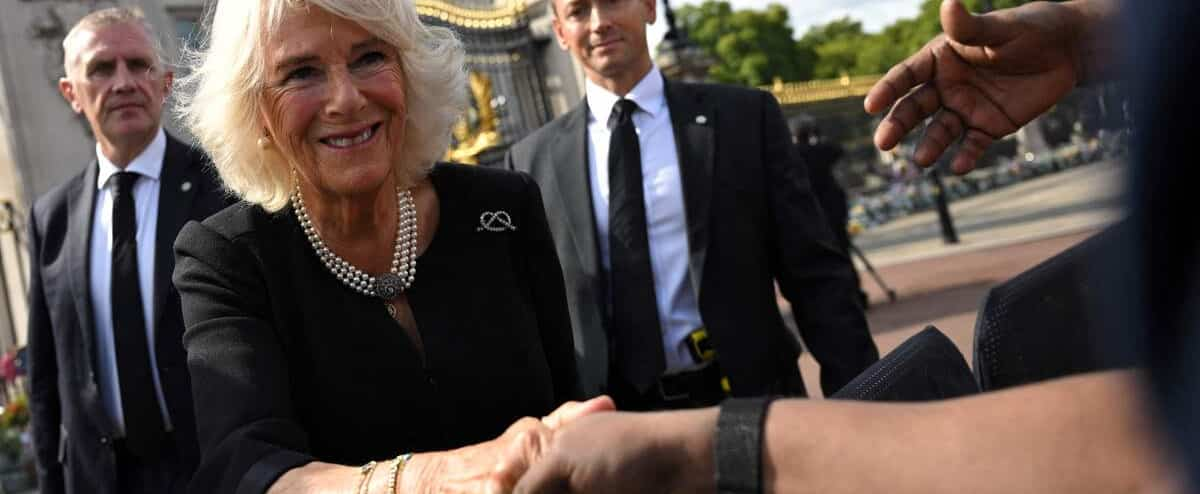Camilla was the great love of King Charles III and will be crowned alongside him on May 6: an extraordinary journey for a long-demonized 75-year-old new queen.
• Read also: Would Charles III be an illegitimate king?
Since the 1990s, she has navigated all the crises, stoic and discreet. For a long time the British saw her as a homewrecker, not forgiving her for the end of the fairy tale marriage of Prince Charles and Princess Diana.
She has now been married to Charles for 18 years, has known him for more than 50 years. The couple project the image of a conniving partnership, as recently on their trip to Germany, their first abroad since Charles became king in September.
“She is a warm and intelligent woman, full of humor and common sense, who did not seek to put herself forward”, explains Isabelle Rivière, specialist in the British monarchy. “Those who don’t like it are those who don’t know it”.
But despite her devotion to the Crown, hundreds of engagements a year and charitable patronage, Camilla’s approval ratings remain mixed at 46% favorable.
Only 14% of Britons want her to be known as ‘Queen Camilla’ according to a recent poll. 36% accept “queen consort” at best, as Elizabeth II had wished, and 23% think that she should not have a title at all (survey DailyMail).
• Read also: King Charles III is full of aces!
” Soulmates ”
Diana had nicknamed her the “Rottweiler” (a dangerous dog), a nickname that has long pursued her. Prince Harry, son of Charles and Diana, described her in his autobiography ‘The Substitute’ as the ‘villain’ who wanted ‘the crown’.
“It was not the end goal” replied Tom Parler Bowles, son of Camilla, in the podcast News Agents. “She married the person she loved.”
“She married for love, knowing very well that it would involve the crown”, tempers the royal commentator Richard Fitzwilliams who describes a woman having “a strong sense of duty” and “devoted to her husband”.
They are “soul mates: same age, same friends, same sense of humor (…) Everything that he and Diana did not have,” he adds.
Helmet of blond hair and deep voice, quiet smile and self-deprecating humor, always one step behind her husband, Camilla remains little known after years in the shadows.
“She has strong opinions on a lot of things, but keeps them to herself,” says 48-year-old food critic Tom Parker Bowles, recounting a mother who has always loved gardening and is “a good cook”.
Camilla also has a daughter, Laura, 45, and five teenage grandchildren, three of whom will be her pages of honor at the coronation.
She has also been an avid reader since childhood. Two years ago, she created a reading circle on Instagram, “The Reading Room”.
Photo archives, AFP
Charles and Camilla, during their civil union, April 9, 2005.
Big bourgeoisie
She is president or godmother of more than 90 charities, defending for years the victims of rape and sexual assault.
Some subjects are particularly close to his heart, such as osteoporosis, a bone disease fatal to his mother and grandmother.
Coming from the upper middle class, daughter of an officer converted into the wine trade, she grew up in the countryside, stopped her studies for the patent, completed her education in a “Finishing School” in Switzerland to learn good manners.
She met Charles in 1970 at a polo match.
A brief affair ensues, before their paths diverge. She married officer Andrew Parker Bowles in 1973. Charles married Diana in 1981.
They resumed their affair in 1986, Camilla divorced in 1995, Charles in 1996.
After Diana’s death, a communication campaign is organized to get her accepted.
• Read also: Cracks in the disunited kingdom of Charles III
The – civil – remarriage of the prince and Camilla in 2005 aroused much reluctance. Queen Elizabeth II does not come, but organizes a reception at Windsor Castle. Over the years, she became very close to this daughter-in-law who, like her, loves horses and dogs.
Being in the media’s eye all the time “isn’t easy,” Camilla said in a rare Vogue interview last year. “Nobody likes to be watched and criticized all the time… but I think in the end I got over all that (…). We must continue to live”.

